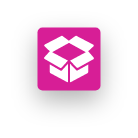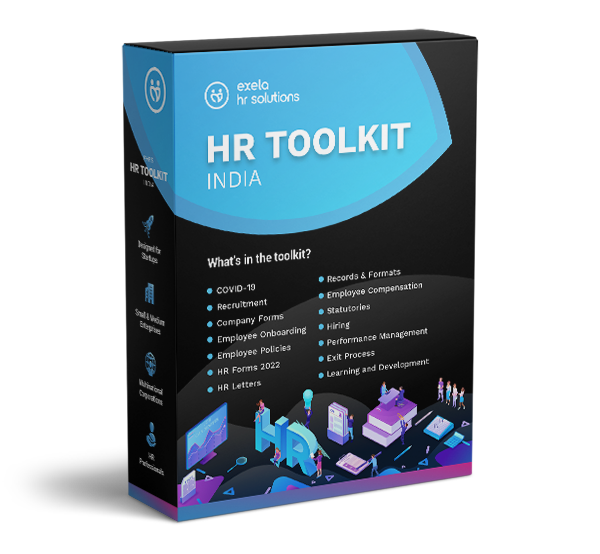
As businesses continue to evolve rapidly, most organizations are expanding their footstep into the international markets – a huge step that can bring unannounced HR management challenges. HRs can miss out on other key aspects while juggling hiring new candidates and adhering to local employment laws, taxes, and payroll practices. Failing to comply with certain rules and regulations and hiring and retaining the best talent can give your HR teams a tough time. Moreover, there are risks involved from the business perspective.
Performing international payroll processing is tricky and needs more attention, which can be a massive bottleneck in your business expansion. Instead of going back and forth with the potential challenges, HR teams should ideally focus on more priority tasks, such as managing the workforce and getting the most out of what they have. Implementing a uniform HR management system can help businesses streamline the entire global workforce with utmost efficiency while minimizing the risks and costs associated with the expansion.
The vast majority of HR teams think they can solve the issues with proper coordination with the HR and payroll systems. However, they often fail to outspread the existing systems and implement a new integrated HR and payroll system as a part of the global expansion. Thus, traditional systems are often scattered and no longer meet modern business requirements. One must consider integrating the payroll and HR solution systems to avoid such barriers. Here’s how payroll and HR integration can be beneficial for your business.
Benefits of integrating your payroll and HR system
The roles of payroll and HR professionals have tremendously changed over the years – they now hold a position of business-critical elements. However, although both departments function differently, they share the same goal – to support employees within the organization. To accomplish this, organizations must consider driving both departments to a more cohesive and integrated model.
A well-synchronized payroll and HR system forms a firm foundation for effectively managing the workforce and helping the company meet its goals and be productive. Moreover, automating and regulating administrative tasks can give HR professionals an edge to focus on value-adding tasks such as strengthening internal relationships and employee engagement.
Here are the benefits of integrating your payroll and HR system:
-
No more duplicate files, endless paper trails, and numerous passwords
Organizations today deal with massive datasets. Managing two different systems and manually transferring data from one system to another requires increased effort in the documentation. This may lead to further setbacks concerning duplicate files, endless paper trails, and different passwords for each system. A unified system helps keep all the records in one place, giving no more duplicate datasets, no more having to deal with endless paper trails, and neither the hold up to remember logins and passwords.
-
Enhanced employee experience
Providing employees with the best possible experience is a top priority for businesses these days. Scattered data sets, files to log in data, limited access to employment documents, and having to shuffle through large datasets from different systems can surely get on the nerves of your employees. Integrated payroll processing and HR solution systems often come with employee self-service functions, allowing them to access to their essential documents, payroll data, and more.
Integrated systems are also a lot easier to use than having to navigate different systems with different passwords. Moreover, employees can check their payslips, contact details, benefits, or billable hours in one place.
Also Read: Withholding HR and payroll data from employees? Unnecessary!
-
Automation of administrative tasks
Manual data handling and tedious administrative tasks often lead to meaningless errors and increased TATs. Automating these tasks by integrating payroll and HR systems can save you a whole lot of time and energy to focus on other high-value activities. Besides, managing data at both systems can get overwhelming, while it is easier just to integrate the systems and enable automated data flows.
For instance, you have logged your daily efforts in the HR timesheets, but the payroll professionals missed considering those while calculating the monthly salaries. The situation can get your organizational reputation in trouble. Moreover, logging in and transferring data every time to perform payroll isn’t an efficient practice, which can cause unnecessary hold-ups. With integrated payroll and HR systems, you will no longer have to jumble between the two systems and streamline your processes by automating them.
-
Less room for error
With thousands of employees and hundreds of teams working from geographically situated locations, it becomes evident that there is room for error. In addition, if there are manual tasks involved, the situation goes downhill. And there is not much anyone can do to avoid the mistakes – skipping even one line can get you in trouble. However, automating can make things better.
You will no longer have to manually enter the data or update the existing information, which means less room for error. As there won’t be any loopholes in the payroll processing, you can boost employee satisfaction and scale productivity rates.
-
More transparency and improved reporting
Integrating your payroll processing and HR solution systems means creating a Single Source of Truth (SSOT) for all your employee data. Having your data stored in one place increases transparency and enables faster and better reporting. In addition, since your teams can extract data from one centralized source rather than spending hours filtering through systems, reports can be compiled and delivered faster than ever.
With automated workflows and easy data access, a few clicks are all you need to generate reliable reports. This makes it easier to analyze the entire data to develop strategies for further improvement.
-
Improved compliance
An internationally growing business means more responsibilities and liabilities to adhere to local compliance requirements. Failing to comply with certain rules and regulations can get your business in trouble with further legal disputes. And as it is perilous to play with reputational damage, organizations can’t miss on improving compliance.
Unfortunately, you can’t really do much if you are all caught up with hiring activities or have manual tasks consuming all your time. Integrating payroll and HR systems gives a whole new perspective to this issue – automating and having a centralized system allows you to keep an eye on all the compliance requirements. In addition, having centralized data makes it easier to meet tax deadlines, avoiding penalties. Moreover, you get an edge in securing all your confidential data in one place with only authorized access.
-
Saves time and money
Considering all the benefits of integrating payroll and HR systems, it is safe to say it allows businesses to save time and money. Any legal disputes, errors while entering the data, data management conflicts, or endless paper trails can cost businesses a fortune. Having a unified data set can help businesses save up on resources, time, and compliance-related costs.
The bottom line
Disconnected systems often fail to meet global HR requirements and drive businesses into a situation where there is no global visibility. Moreover, the resources needed to manage complex data add to the total cost of your solution while impacting the ability to make timely and accurate business decisions. Thus, having a centralized system can solve all issues related to payroll processing or HR processes. Exela HR Solutions is the market leader in HR and payroll outsourcing and can help you streamline your operations worldwide and make the bests decisions for better workforce management. Speak with our experts at Exela HR Solutions now!
DISCLAIMER: The information on this site is for general information purposes only and is not intended to serve as legal advice. Laws governing the subject matter may change quickly, and Exela cannot guarantee that all the information on this site is current or correct. Should you have specific legal questions about any of the information on this site, you should consult with a licensed attorney in your area.





